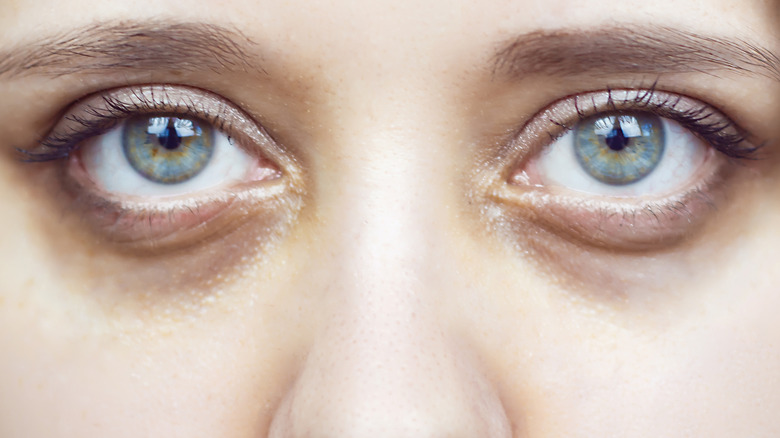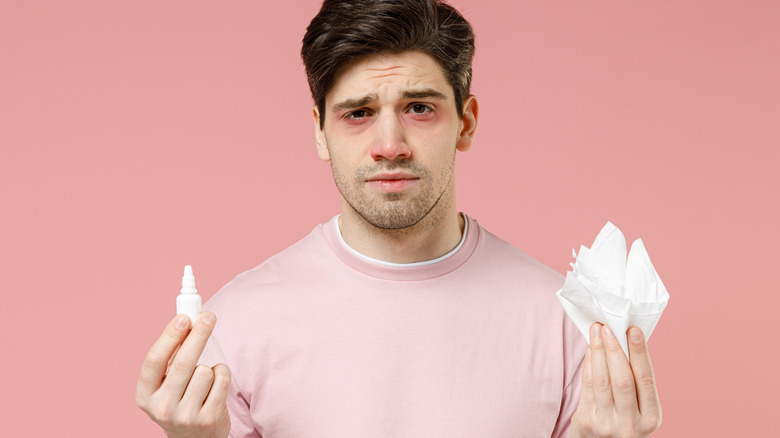What Are Allergic Shiners?
Allergy season can bring about sneezing, coughing, a scratchy throat, and more (via MedicalNewsToday). You might be familiar with some of these common allergy symptoms, but congestion that accompanies an allergic reaction can also affect the body in lesser-known ways.
While similar in appearance to a black eye, allergic shiners aren't the kind of dark eye circles you might picture a professional boxer walking away with after a match. A black eye caused by blunt force is due to blood leakage from injured veins or capillaries, reports the Connecticut Sinus Center. Allergic shiners, on the other hand, are the result of sinus congestion causing blockages in the veins beneath the eyes. Unable to circulate as it normally would, the blood pools and creates the appearance of dark under-eye circles.
Often blue-gray or purple in color, the frequency and severity of allergic shiners vary from person to person. "Sometimes allergic shiners look really bad in the morning and fade in the afternoon, or they may be an everyday occurrence," allergist Dr. Daniel Sullivan told The Healthy. Because allergic shiners are symptoms of an allergic reaction, they can be triggered by the same stimulants that aggravate other allergy symptoms, such as a runny nose or watery eyes (per MedicalNewsToday). This includes pollen, dust mites, pet dander, mold, fungus, and more.
Treatment options for allergic shiners
While it's logical to assume some kind of special eye treatment might be needed, treating the sinus congestion is actually the best way to attempt treating allergic shiners, explains Smith Allergy & Asthma. Antihistamines, decongestants, nasal sprays, allergy shots, and corticosteroids can all help treat the allergy and restore blood flow to the area around the eyes, which may lessen the appearance of dark marks (per Connecticut Sinus Center). Use of a cold compress for up to 10 minutes may also be helpful (via The Healthy). If you notice the emergence of allergic shiners or experience any additional allergy symptoms, be sure to speak to your healthcare provider. This is especially important if fever, pain, or green nasal discharge also develop. Your doctor can help with diagnosis and treatment, according to MedicalNewsToday.
"In general, prevention and avoidance of an allergic reaction and exposure to an allergen is the name of the game in the field of allergy," internal medicine doctor Rebin Kader, who specializes in allergy and immunology, told The Healthy. For this reason, experts suggest utilizing dehumidifiers, keeping up with routine air filter replacements in the home, and keeping windows closed on days when pollen levels peak.


